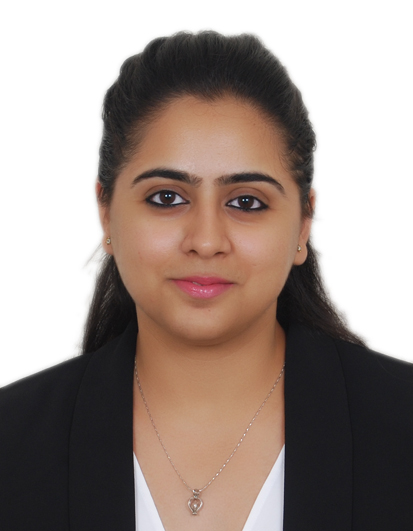Introduction
The journey to building globally distributed, high-performance applications starts with choosing the right database infrastructure. Oracle’s Globally Distributed Database offers a powerful, flexible solution that is engineered to handle complex, distributed workloads.
But what if you could explore its full potential without any upfront investment? Enter Oracle’s Globally Distributed Database free images—tailored to give developers and enterprises an easy, cost-effective gateway into the world of distributed database management. These free images allow you to rapidly deploy and test the full range of database features in your environment, across multiple platforms, without incurring any costs.
In this blog, we’ll walk you through how to leverage these free images to accelerate deployment, optimize your testing process, and unlock the full capabilities of Oracle’s Globally Distributed Database for your applications.
Free Images: A Gateway to Explore Oracle Globally Distributed Database
Unpacking the Benefits
Oracle offers pre-built and tested free images of its Globally Distributed Database, giving developers and enterprises the ability to explore its powerful features across multiple platforms—without any cost commitment. Whether you’re working in the cloud, multi-cloud, on-premises, in Kubernetes, or even outside of Kubernetes environments, these images provide an accessible, flexible starting point.
Here are the key free images available for download:
- Oracle Database 23ai (23.5.0.0) Free Database Container Image: Download here
- Free GSM Image: Download here
These images provide a fully functional environment that allows you to delve into Oracle Globally Distributed Database capabilities—such as data distribution methods, seamless integration with advanced AI features, and new Raft replication introduced in 23ai. This hands-on approach offers invaluable insights, empowering you to understand how Oracle’s distributed database can be strategically leveraged to drive your organization’s data initiatives forward.
Moreover, you can use Oracle’s Globally Distributed Database GitHub Solution with these images to deploy different solutions on containers, that provide flexibility in managing sharding topologies. The solution includes options for Raft Replication, user-defined sharding, and system-managed sharding, making it easier to experiment with various distributed database configurations.
Deployment Options:
1. Deploying on Podman: Simplified Containerized Solutions
If your current infrastructure relies on containerized environments, deploying Oracle Globally Distributed Database free images on Podman offers a straightforward path to testing. Whether you’re operating on Oracle Cloud Infrastructure (OCI), on-premises, or on other cloud platforms, these images provide a consistent deployment experience that aligns with your existing container strategy.
Using tools like Podman Compose, you can deploy sharding topologies with just a few clicks, consuming predefined YAML files that automatically set up the network, containers, and sharding configurations. This approach streamlines the process, making it easier to get started with sharding and distributed database management.
GitHub Resource for Sharding Deployment: Explore here
2. Deploying on Kubernetes: Enhancing Automation with Oracle Database Operator
Whether you are using Kubernetes in cloud, on OCI, on-premises, or even on other cloud providers like Azure or AWS—you can leverage Oracle’s free images as long as your setup is running on a supported Oracle stack. This flexibility allows you to explore Oracle Globally Distributed Database features across your existing Kubernetes infrastructure without needing additional adjustments.
The Oracle Database Operator plays a crucial role here by delivering full automation for managing your sharding topology. This includes provisioning, scaling up or down, and monitoring—all within Kubernetes. The operator simplifies lifecycle management, providing an automated and efficient approach to handling complex distributed database tasks.
This seamless integration not only enhances your Kubernetes automation but also offers a practical, no-cost entry point into advanced database management, giving you the tools to align Oracle’s database solutions with your cloud-native strategy.
3. Deploying with Vagrant on VirtualBox using containerized images
Oracle provides a VirtualBox-based solution, which uses Vagrant to deploy the free images in a VirtualBox setup. This approach allows users to easily explore the features of Oracle Globally Distributed Database in a familiar, virtualized environment.
The VirtualBox deployment provides a consistent experience, allowing you to test and evaluate the same Globally Distributed Database features found in containerized deployments. This flexibility ensures that all organizations, regardless of their current infrastructure, can explore the benefits of Oracle Globally Distributed Database.
Use Cases
Oracle Globally Distributed Database free images are not just about infrastructure—it enables you to achieve powerful use-cases that help build robust, globally distributed applications. With its advanced features, such as Raft Replication, user-defined sharding, and system-managed sharding, Oracle’s solution provides a practical foundation for solving enterprise challenges.
Below, we’ve outlined key use-cases you can achieve using Oracle Globally Distributed Database, showcasing how the platform can address real-world needs and add value to your applications.
- Achieve Data Sovereignty with Oracle Globally Distributed Database
- Deploying and Managing a Directory-Based Oracle Globally Distributed Database
- Raft Replication Configuration and Management
- System-Managed Sharding
- Creating a Synchronous Duplicated Table
Conclusion: A Cost-Free Path to Explore Oracle Globally Distributed Database
Oracle’s free images for Globally Distributed Database open up a world of possibilities for developers and organizations looking to explore globally distributed databases without financial commitment. From containerized deployments on Podman and Kubernetes to virtualized setups on VirtualBox, these images provide the flexibility to fit into any environment. They not only offer an easy entry point but also a powerful way to experience the full capabilities of Oracle Globally Distributed Database.
Oracle Database Free supports up to:
- 2 CPUs for foreground processes
- 2GB of RAM (SGA and PGA combined)
- 12GB of user data on disk (irrespective of compression factor)
For more details, please check Oracle Database Free FAQ
Get Started Today:
- Explore the pre-built OCR images.
- Dive into Kubernetes-based solutions.
- Check out additional insights on Kubernetes Add-On Lifecycle Management.
By embracing these free images, you can test, learn, and develop on Oracle Globally Distributed Database, ultimately positioning your applications for success in a distributed, data-driven world.


